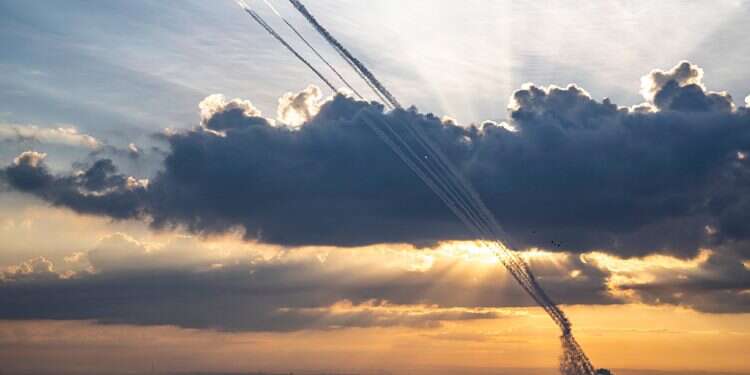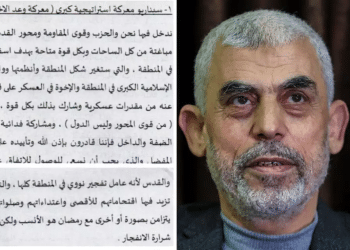Hamas' rocket arsenal has been significantly depleted, and may have been reduced to a mere few hundred rockets, security officials estimate in an exclusive conversation with Israel Hayom.
Follow Israel Hayom on Facebook, Twitter, and Instagram
According to their estimates, at the start of the fighting Hamas had about 20,000 rockets and mortar shells at varying ranges, most of them short range. In the first four hours of the October 7 attack, Hamas fired about 3,000 rockets and mortar shells into Israeli territory, and in total during the fighting period about 9,000 rockets reached Israeli territory.
Video: Security forces respond to rocket attack / Credit: Erez Linn
For comparison, during the 34 days of the Second Lebanon War 4,400 rockets were fired towards Israel, and during the 51 days of Operation Protective Edge about 4,500 rockets were fired into Israel.
According to the estimates, a rather large proportion of the rockets fired in the war so far landed within the Strip, so the actual number of rockets fired is higher than 9,000.
The rocket hunting operations conducted by the IDF, which managed to strike many rockets from the air and the ground, have also significantly reduced the rocket arsenal in the Strip.
Rocket hunting continues in recent days throughout the Strip, even in the northern Strip from which most forces have withdrawn, and the IDF continues to eliminate rockets and launchers. In recent days, for example, the IDF reported that troops operated in the area from which rocket fire was identified this week towards the Gaza border communities and located an area with rocket launchers. It was also reported in recent days that the army located a rocket launcher loaded in an olive grove in the Al-Muazi area of the strip.
Video: Reuters / Israeli firefighters attempt to put out fires after rockets fired from Gaza
In addition to attempts to locate remaining rockets and launchers in the strip, the IDF also acts to strike launchers after they have fired into Israeli territory. Thus, for example, on the night following the 25 rocket attacks on Netivot in January, the IDF destroyed the launchers from which the rockets were fired.
Due to the dramatic decrease in the number of rockets held by terror organizations in the Strip, rocket fire into Israel has greatly diminished, as terror groups economize their use of the rockets to continue with their attacks on Israel for a longer period. In recent days Hamas has been firing only sporadically, mostly towards the Gaza border communities, while central Israel has been all but spared of any barrages for the better part of the past month.
To reduce Hamas' ability to continue manufacturing rockets during fighting, and diminish its ability to fire on the "day after", as part of the fighting in the strip the IDF is focusing on rocket production sites. Thus, for example, dozens of machines and lathes for manufacturing rockets and weaponry were located and destroyed in recent days in the Zeitoun neighborhood in northern Gaza, as well as in additional locations in the Strip. In recent times, the destruction of central manufacturing sites and facilities of Hamas' production sites in the Strip have been reported, many of which were located dozens of feet underground.
Moreover, army officials note that to further reduce future rocket capabilities, a solution must be found regarding the Rafah crossing and the Philadelphi Route which borders Egypt to prevent Hamas from further arming itself with rockets and other weaponry. At this stage of fighting, and in light of Egypt's strong opposition to action in southern Gaza, it is still unclear how this can be overcome.
In any case, attempts have begun in the IDF to return residents of the Gaza border communities, 4-7 kilometers from the Strip. However, as long as fighting continues, the army cannot guarantee residents that they will not suffer occasional rocket or mortar fire.
Subscribe to Israel Hayom's daily newsletter and never miss our top stories!




